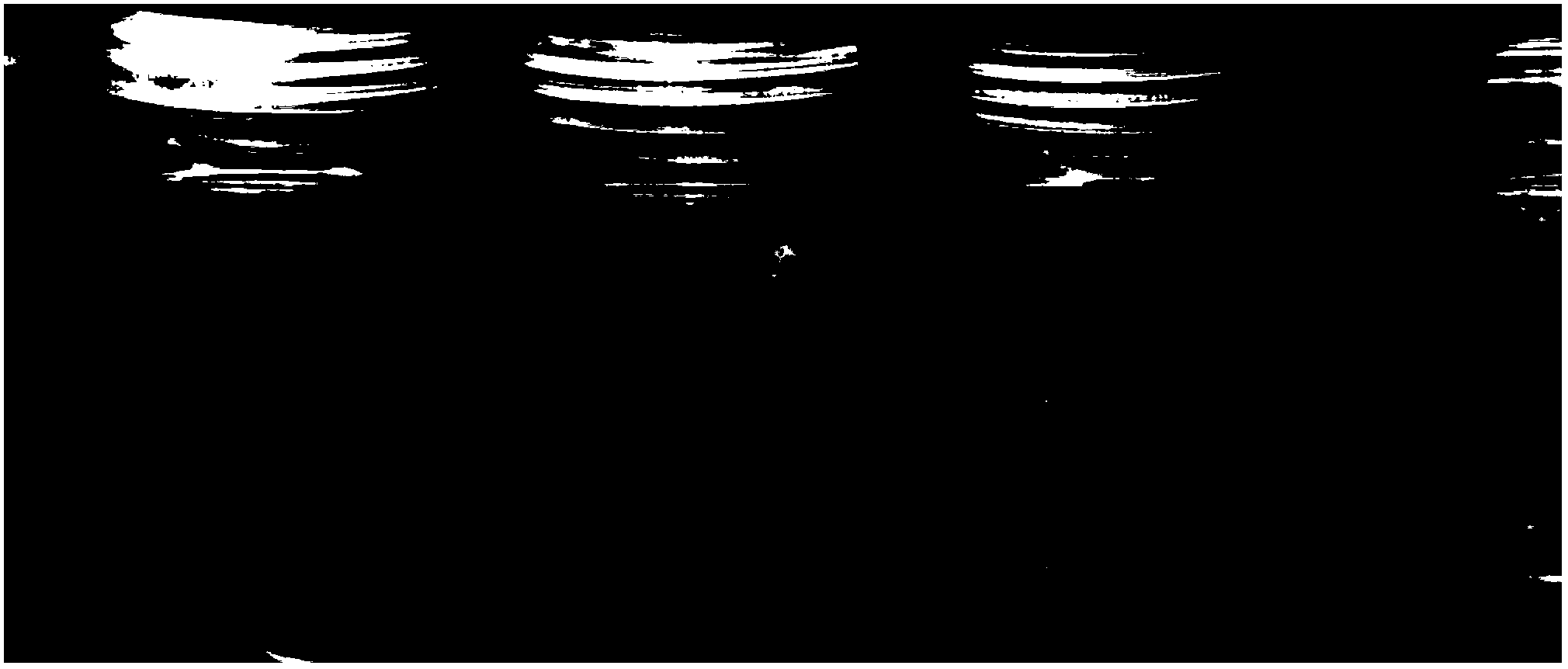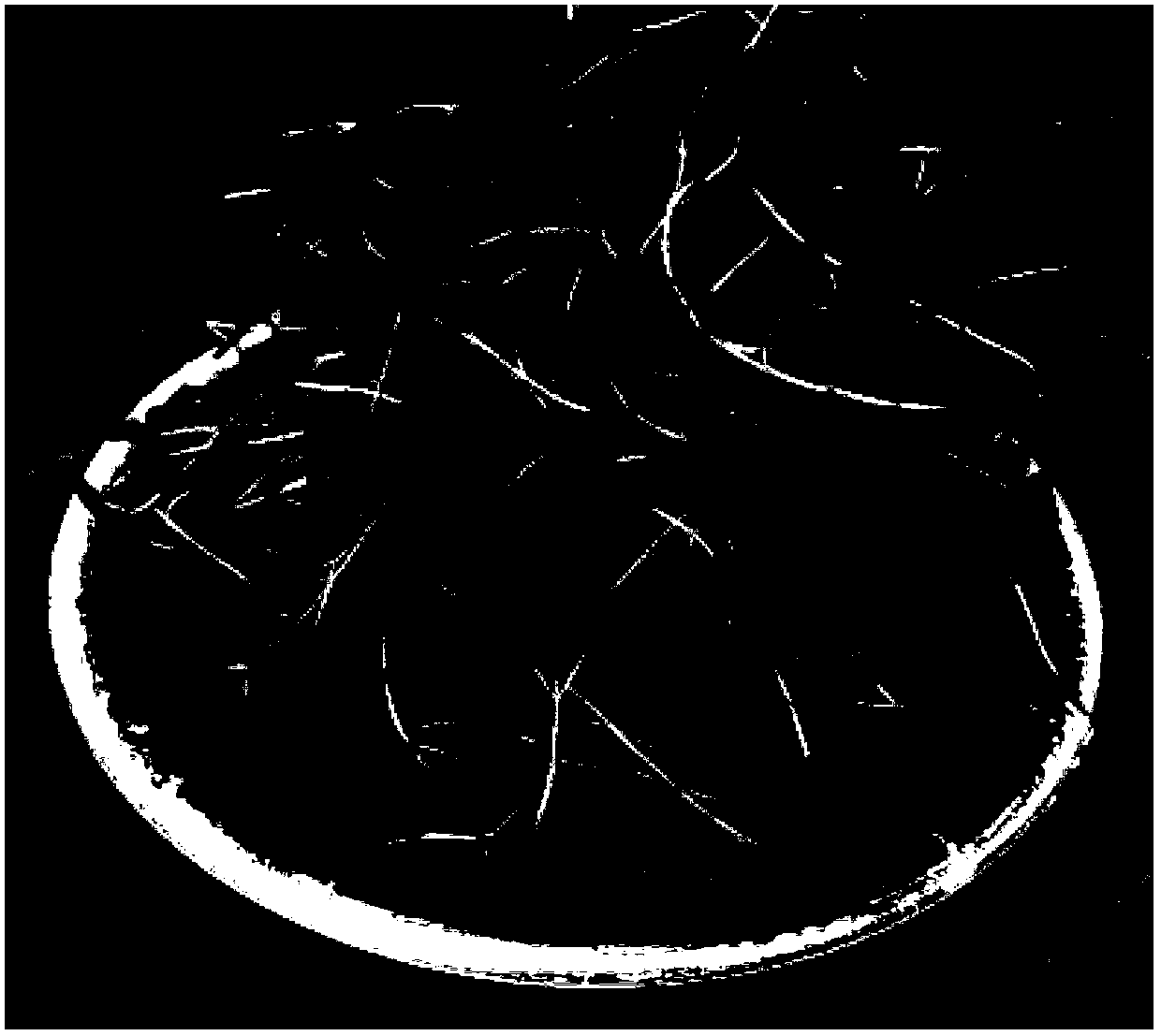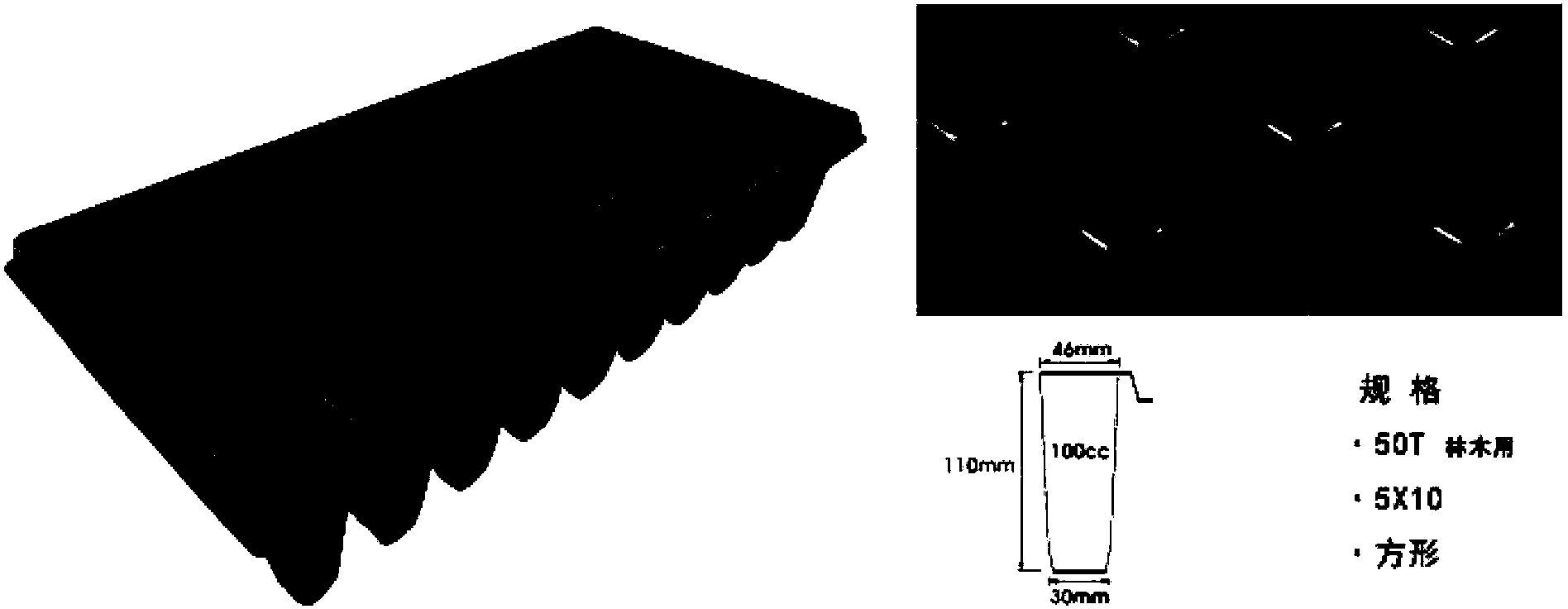Method for quickly raising clonal seedlings of teakwood by light matrix tray
A light-substrate, clonal technology, applied in planting methods, botanical equipment and methods, soilless cultivation, etc., can solve the problems of reduced cold resistance and wind resistance, low labor efficiency of seedling cultivation, and long root recovery time, etc., to achieve The rooting time is advanced, the cost of seedling cultivation and afforestation is saved, and the time of seedling cultivation is short
- Summary
- Abstract
- Description
- Claims
- Application Information
AI Technical Summary
Problems solved by technology
Method used
Image
Examples
Embodiment 1
[0057] A method for rapid seedling cultivation of teak clones in light-substrate plugs (Guangzhou, carried out from May to June):
[0058] (1) Preparation of propagation materials
[0059] Teak (Tectona grandis L.f.) tissue-culture bottle seedlings (cultivated to 3 Opposite leaves, 7cm high; taken from the Tropical Forestry Research Institute of the Chinese Academy of Forestry, the same below.) Moved to the shade shed to practice seedlings for 12 days, then took out the tissue culture seedlings from the bottle, cut off the base callus, and obtained the seedlings. Soak the seedlings in clean water before transplanting;
[0060] (2) Preparation of light substrate for seedling cultivation
[0061] Mix peat soil, vermiculite, perlite, coco peat and yellow heart soil evenly in a volume ratio of 1:1:1:2:2 to obtain a light substrate for seedling cultivation;
[0062] (3) Selection of seedling trays
[0063] Select a 50-hole plastic seedling tray (length, width, height 540mm×280m...
Embodiment 2
[0073] A method for rapid seedling cultivation of teak clones in light-substrate plugs (Guangzhou, carried out in late April):
[0074] (1) Preparation of propagation materials
[0075] Teak (Tectona grandis L.f.) plantlets (cultivated to 2 Opposite leaves, height 5cm) were moved to the shade for 15 days, and then the tissue cultured seedlings were taken out from the bottle, and the base callus was cut off to obtain seedlings, which were soaked in clear water before transplanting;
[0076] (2) Preparation of light substrate for seedling cultivation
[0077] Mix peat soil, vermiculite, perlite, coco peat and yellow heart soil evenly in a volume ratio of 1:1:1:2:2 to obtain a light substrate for seedling cultivation;
[0078] (3) Selection of seedling trays
[0079] Select a 50-hole plastic seedling tray (length, width, height 540mm×280mm×110mm), the holes are large on the top (46mm) and small on the bottom, and the bottom is reduced to a circular (diameter 10mm) drainage hol...
Embodiment 3
[0089] A method for rapid seedling cultivation of teak clones in light-substrate plugs (Guangzhou, carried out in mid-July):
[0090] (1) Preparation of propagation materials
[0091] Under the conditions of shading degree of 70-90%, humidity of 80-100%, and temperature of 25-28°C, teak (Tectona grandis L.f.) tissue culture bottle seedlings (cultivated to 4 Opposite leaves, height 10cm) moved to the shade for 10 days, then took out the tissue-cultured seedlings from the bottle, cut off the base callus to obtain seedlings, soaked the seedlings in clear water before transplanting;
[0092] (2) Preparation of light substrate for seedling cultivation
[0093] Mix peat soil, vermiculite, perlite, coco peat and yellow heart soil evenly in a volume ratio of 1:1:1:2:2 to obtain a light substrate for seedling cultivation;
[0094] (3) Selection of seedling trays
[0095] Select a 50-hole plastic seedling tray (length, width, height 540mm×280mm×110mm), the holes are large on the top ...
PUM
 Login to View More
Login to View More Abstract
Description
Claims
Application Information
 Login to View More
Login to View More - R&D
- Intellectual Property
- Life Sciences
- Materials
- Tech Scout
- Unparalleled Data Quality
- Higher Quality Content
- 60% Fewer Hallucinations
Browse by: Latest US Patents, China's latest patents, Technical Efficacy Thesaurus, Application Domain, Technology Topic, Popular Technical Reports.
© 2025 PatSnap. All rights reserved.Legal|Privacy policy|Modern Slavery Act Transparency Statement|Sitemap|About US| Contact US: help@patsnap.com



